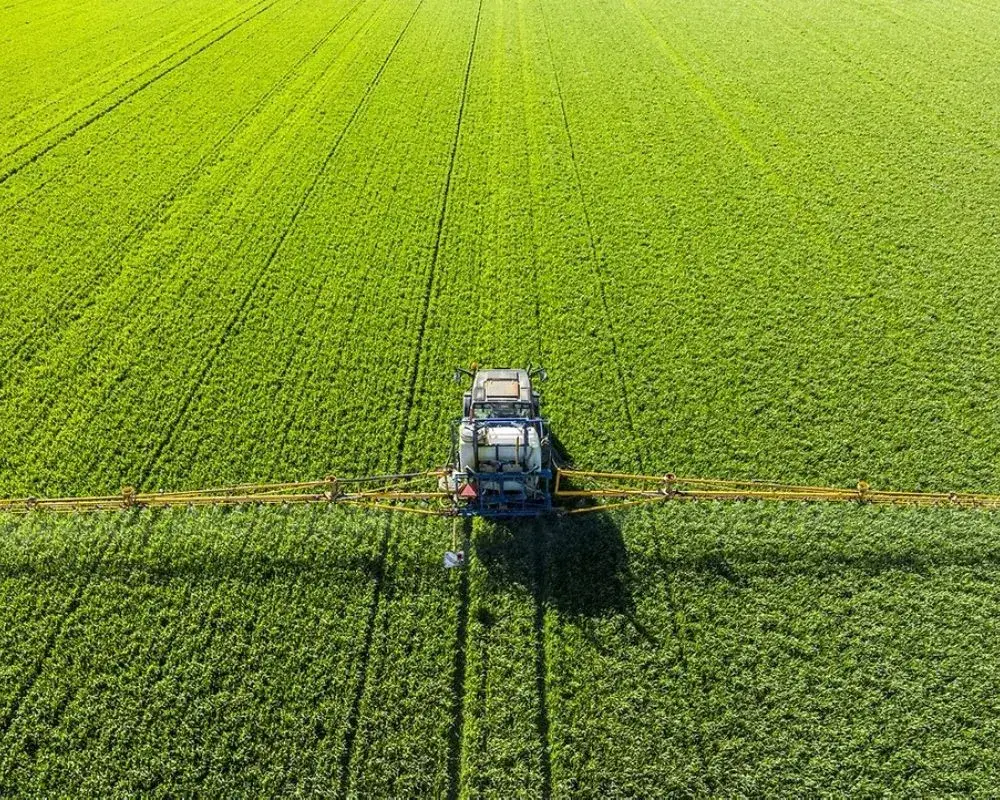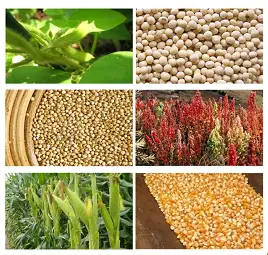
The possible imposition of new US sanctions on buyers of Russian fertilizers puts regional agriculture in jeopardy.
Latin American agriculture is once again in the spotlight. The threat of new US sanctions against buyers of Russian fertilizers could unleash a chain of adverse consequences for the region’s agriculture. Brazil, Mexico, and Colombia, three of the continent’s main agricultural players, depend significantly on these strategic inputs to maintain the productivity and competitiveness of their crops.
Critical Dependence on Russian Fertilizers
In the case of Brazil, the link is structural: more than 33% of the fertilizers used come from Russia. In the first half of 2025 alone, imports from that country grew by 30%, according to official data. “Without that volume, soybean and corn production directly becomes unviable,” said Lucas Beber, vice president of Aprosoja.
Mexico is also not immune to the problem. In 2024, Colombia imported more than $580 million in Russian fertilizers, with urea being a key input for key crops such as corn, sorghum, and wheat. Raúl Urteaga, a former official at the Ministry of Agriculture, warned: “The quality of fertilizers could decline, and that would directly affect productivity.”
Colombia, for its part, imports one of every four kilos of fertilizer from Russia, putting at risk strategic sectors such as coffee, fruits, and flowers, whose exports depend on stable and efficient production.
Collateral Effects and Geopolitical Tension
These potential sanctions, promoted by the Trump administration as part of its strategy to curb Russian financing in the war in Ukraine, could restrict trade flows and drive up the prices of agricultural inputs. The memory of 2022, when prices soared globally after the Russian invasion, is still fresh.
Mosaic, one of the largest companies in the sector, noted that “tensions are already delaying key sales for the soybean campaign in Brazil,” which could exacerbate logistical and operational problems.
Independence Plans Failing to Take Off
Although Brazil and Mexico have promised to reduce their dependence, the results are limited. In Mexico, the country seeks to increase its domestic fertilizer production from 33% to 80%, but Pemex has yet to make the business profitable. In Brazil, the high cost of gas and a lack of financing are hindering import substitution.
Risks to Food Security and Consumers
The projected scenario raises concerns about its effects on the agri-food value chain: more expensive inputs, lower yields, and higher consumer prices. There could also be a direct impact on regional inflation and the competitiveness of exports, especially to the US, the main destination for many agricultural products.
Source: AgroLatam
New Indian tender puts pressure on global urea prices
Buyers in Brazil remain cautious for the 2025/26 second crop

The nitrogen fertilizer market has turned its attention to India in recent days. This movement was prompted by the announcement of a new tender from the Asian country for the import of urea, which intends to purchase 2 million tons of nitrogen fertilizers, an amount that could absorb a substantial volume of the global supply at this time, according to the weekly fertilizer report from StoneX, a global financial services company.
“Seasonally, fertilizer sales in the Indian market tend to increase between May and September. Therefore, the country’s importers need to ensure that reserves are well-stocked at this time of year. However, demand is known to be strong in India, which has led the country to seek more urea shipments on the international market,” highlights Market Intelligence analyst Tomás Pernías.
As a major importer, India contributes to impacting the prices of nitrogen and phosphates in the international market and moves a considerable amount of products, strengthening investors’ bullish sentiment, depending on the context of each sector.
“In the urea futures market, bullish sentiment has already been observed among investors in the US, Brazil and the Middle East. Last Thursday (24), the futures contract that prices urea CFR Brazil for August/2025, for example, ended the day with an increase of US$ 33, after negotiations carried out at US$ 490 per ton”, shares Pernías.
Concerns about the 2025/26 Brazilian second crop
According to the Market Intelligence analyst, the announcement of this new Indian tender could be a cause for concern for Brazilian buyers, especially those who still need to purchase nitrogen for the 2025/26 second corn crop. “After the announcement, it’s common for international market prices to remain firm to some extent, as suppliers assume that the Indian acquisition could reduce some of the existing supply,” he explains.
Furthermore, buyers tend to be cautious while the bidding process is underway, as the event often provides more clarity for industry participants after the details of the negotiation are disclosed.
According to the StoneX report, current data shows that the production cost of high-tech corn in Mato Grosso is high for the 2025/26 harvest, which is likely to negatively pressure farmers’ margins. “High costs, combined with a weak grain market, can create difficulties for producers who don’t manage their operating costs well. Added to this is the current scenario of more expensive credit, which is another factor that is unfavorable for Brazilian farmers,” concludes the Market Intelligence analyst.
Source: Cultivar Magazine

Azomures restarts fertilizer production after year-long shutdown

Azomures, Romania’s only operational fertilizer producer, has resumed production at 30% capacity following a nearly year-long shutdown triggered by high natural gas prices. The plant, located in Târgu Mureș and owned by Swiss trading group Ameropa, has restarted with ammonia production, a key input for complex fertilizers.
The company has historically adjusted operations in response to fluctuations in the gas market. According to Romanian business outlet Economedia.ro, the facility is currently consuming about 1 million cubic meters of domestic natural gas per day, compared to its nameplate capacity of 3.5 million cubic meters.
State-owned natural gas producer Romgaz is exploring a potential acquisition of Azomures, either partially or in full, to expand its value-added activities. The company has launched a tender to secure consultancy services for the assessment and negotiation process, as well as to develop a business plan for the integration of Azomures.
“Romgaz is analyzing the possibility of developing its businesses in the chemical industry,” states the tender documentation, quoted by Profit.ro. The consultants will examine operational synergies, risks, and opportunities associated with the acquisition, and propose possible improvements to the plant’s business model.
Azomures has a total annual production capacity of 1.8 million tonnes of fertilizers. Approximately 75% of output is sold domestically, with the remainder exported to neighboring countries such as Serbia, Hungary, Bulgaria, and Ukraine.
The facility spans 100 hectares and produces agricultural fertilizers such as NPK, ammonium nitrate, nitrolim, and granulated urea, as well as industrial chemicals including melamine, ammonia water, and nitric acid.
Source: Fertilizer Daily

ARGENTINA MAIN CROPS OVERVIEW:
WHEAT: Wheat planting showed a week-over-week progress of 3.1 percentage points, advancing over 95.9% of a projected area that remains at 6.7 Mha nationwide, but with zonal adjustments. These modifications respond, on the one hand, to a sustained positive trend over recent weeks in the production centers and the province of Santa Fe and, on the other hand, to the impossibility of meeting the original planting plans in areas of the central-eastern and southern agricultural areas experiencing flooding conditions. According to collaborators, these areas would not recover before the closing of the planting window and would therefore be designated for coarse seed planting. Regarding the emerged area, 97.5% of the area remains in Normal to Excellent condition, and 82.3% has Adequate to Optimal moisture, with 80.8% transitioning from leaf expansion onward.
CORN: The corn harvest for grain advanced 5.1 percentage points during the last week, reaching 84% of the national total. This progress represents a 6.7 percentage point increase compared to the average of the last five cycles, although it is still 2.6 percentage points behind last year’s pace. As larger production volumes arrive from the north of the country, average yields are trending downward, affected by results well below historical averages in that region. The average national yield currently stands at 73 t/ha, with a projection for the 2024/25 season of 71.6 t/ha. Meanwhile, excessive water levels persist in the center of the province of Buenos Aires, limiting the access of harvesters to fields and causing significant delays in the harvesting pace. In some areas, year-over-year differences in harvest progress range between -5 and -12 percentage points. In this context, the national production projection remains at 49 MTn.
BARLEY: After a two-weekly progress of 11.1 percentage points, barley planting has covered 91.1% of the suitable area nationwide. However, a year-on-year delay of -8 percentage points persists due to excessive water, especially in central and southern Buenos Aires, particularly in the Saladillo and Tandil districts. Ninety percent of the fields in the southern barley-producing areas have optimal/adequate water conditions. Likewise, the crop is advancing in its early stages. In the southeast, 74% of the area has emerged, with 45% in leaf differentiation and 5% beginning tillering, with 92% of the area planted under normal/good crop conditions. In the southwest, the crop is showing slow development due to low temperatures, with 38% in the leaf differentiation stage, reflecting optimal growing conditions.

